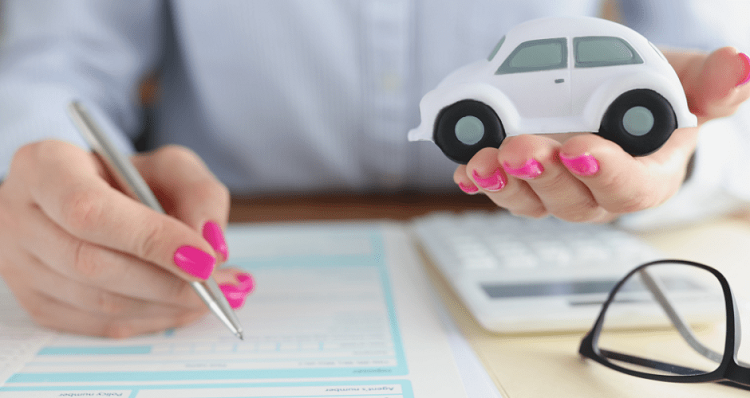Running a business comes with its fair share of challenges, and one of the most stressful situations can be dealing with damage to a business vehicle. Knowing how to manage the problem with your insurance provider can save everyone time, cash, and plenty of headaches, regardless of how minor the crash is. This guide will walk you through the key steps to take when your business car is damaged and how to efficiently manage the insurance process, from assessing the damage to getting your vehicle back on the road.
Table of Contents
Assess the Damage and Ensure Safety
The first priority when your business vehicle is damaged is safety. After the accident, make sure all passengers are unharmed, and if necessary, call emergency services. Once you’re sure everyone is safe, begin documenting the damage. Take clear photos of all affected areas of the vehicle, as well as any damage to other vehicles or property involved in the incident.
In addition to photographs, write down any details about the accident while they’re still fresh in your mind. This documentation will be essential when filing your insurance claim and can help prevent disputes down the road.
Notify Your Insurance Provider Immediately
Once the immediate aftermath of the accident is handled, your next step should be to contact your insurance provider. Timely communication is critical, as delaying this step could lead to complications or even a denial of coverage. When you call your insurer, have the details of the accident ready to share, including photos, notes, and any police reports.
It’s also a good idea to check whether your specific policy covers the type of damage sustained. For example, does your insurance cover collision damage, or will you be responsible for the repairs out of pocket? Having a clear understanding of your coverage will help guide your next steps.
Understanding Your Insurance Policy
Understanding your insurance policy is key to knowing what you’re entitled to in terms of coverage. Business vehicle insurance policies typically include several types of coverage, such as collision, comprehensive, and liability. Collision insurance covers damage from an accident, while comprehensive insurance protects against non-accident-related damages like theft or weather damage. Liability insurance, on the other hand, covers damages you cause to others.
It’s also important to know your deductible the amount you’re responsible for paying before insurance kicks in. Additionally, pay attention to claim limits, which cap the total amount your insurance will cover.
If you’re unsure about any aspect of your policy, it’s essential to review it carefully or speak with your provider to get clarification.
Choosing the Right Insurance Provider
When it comes to choosing an insurance provider for your business vehicles, not all companies are created equal. A good insurance provider should offer comprehensive coverage that meets the specific needs of your business. Quick claims processing, responsive customer service, and a network of approved repair shops are all signs of a reliable insurance company.
If you’re looking to upgrade your current insurance plan or switch providers, consider companies that specialize in business vehicle coverage. An example of this is check out R.A Hughes for car insurance coverage in Winnipeg. They offer tailored plans that help protect your business vehicles and ensure you can get back to business quickly in the event of an accident.
Finding a Repair Shop that Accepts Insurance
Once your insurance claim is underway, your next step is to find a repair shop that accepts insurance payments. Many insurance companies have a list of preferred repair shops that they work with, and using one of these shops can streamline the process.
If your vehicle needs windshield repair, for example, it’s a good idea to choose a reputable shop that works directly with your insurance provider to handle the claim. You can click here to visit Exact Auto Glass for windshield repair. Not only do they handle insurance claims, but they also ensure high-quality repair work to get your vehicle road-ready again.
Follow Up on the Repair Process and Claim Settlement
Once your vehicle is in the shop, it’s important to follow up with both your insurance provider and the repair shop to ensure everything is progressing smoothly. Keep communication open, and don’t hesitate to ask questions if something seems unclear. Make sure the repairs being done are covered by your insurance, and check if there are any out-of-pocket expenses that you’ll need to handle.
Once the repairs are completed, thoroughly inspect your vehicle before accepting it back. This ensures that all damage has been properly repaired, and there won’t be any surprises later on. After the repair is completed and your claim is settled, make sure to retain all documentation for your records.
Conclusion
Dealing with business vehicle damage can be stressful, but by taking the right steps, you can manage the process efficiently and get your vehicle back on the road without too much hassle. Remember to document the damage, communicate with your insurance provider promptly, and choose trusted repair shops to handle the necessary repairs. With the right insurance provider, like R.A Hughes, and reliable repair shops, such as Exact Auto Glass, you’ll be well-prepared to navigate the insurance process and get your business vehicles back in action.

